Blog Archives
Home -
Archive by category "Zoo"
After Kristy Noem boasted about shooting her puppy in cold blood, now there are reports that right
wing figurehead Kevin Roberts told several people that he killed a neighbor’s dog with a shovel to
stop her from making noise.
The dog, Loca, disappeared in 2004, the year Roberts was alleged to have boasted about killing her.
It’s impossible to verify whether the story is true or not but there is evidence that casts suspicion on
Roberts.
The chair of the history department at New Mexico State University where Roberts worked recalled hearing the story, as did two other people, a professor andher spouse and three others who said they heard the account at the time from others. Roberts hadn’t said the dog was a danger, according to these reports, he had just said the dog was loud, and he appeared proud of what he had done.
Roberts named the neighbor who owned the dogs, Daniel Aran, and claimed that animal control had
come to rescue multiple dogs from the property, casting himself as a concerned neighbor, as well as
citing that Aran went to prison for cocaine distribution. Aran and his mother denied that animal
control had come to rescue any dogs. They both said they had a dog go missing around 2004, the
year when Roberts boasted about killing a dog. They spoke with affection about their dog, “my little
Loca.” Aran said Loca had been his favorite dog. “She was a little, little thing like this,” Aran said.
“She was a tiny, cute little thing.”
Aran said he and his mother went searching for the dog but could never find her, and dog catchers
weren’t able to find her either.
We will never know what happened to little Loca, or what she had to endure in her final moments.
Despite concerning evidence, this cold case will never go investigated and little Loca’s mystery will
not be solved. Any justice that may be due to her will not be served.
Although we have no way of knowing whether these allegations are true, it’s a chilling story that
should serve as a reminder that animals do not receive the same treatment in the criminal justice
system that humans do. Loca deserved better than this.
At Freedom 4 Animals we work with lawmakers, nonprofits, animal rights groups, and individuals to
seek justice for animals and their human custodians who have been harmed, and to advocate for
animal rights within the criminal justice system and beyond. We work to educate the public and
anyone who is interesting in learning about animal rights about the role of animals in society and
how we can re-address those roles to achieve freedom and equality for animals.
To learn more about how animals are treated differently in the criminal justice system and how
violence to animals predicts other forms of violence, please visit the resources on our website.
The Miami-Dade commission has served eviction papers to the Dolphin Company, the owners of the Miami Seaquarium, after the company presided over severe neglect and poor conditions for animals in their care for many years. The Miami-Dade commission has ordered the Dolphin Company to vacate the premises by the 21st of April 2024. The commission’s letter cited violations of the lease agreement which included “not just a default, but a complete disregard for the safety of the animals housed on the premises.”
The history of the park is one of sadness, neglect, cruelty and enslavement for animals. The park’s history as an amenity for humans on the other hand, is one in which it enriched a private company and in the park’s earlier years was the third largest contributor to Miami-Dade County’s revenue through lease and tax payments.
The park is behind at least $180,000 in rent, which is one reason for the Miami-Dade commission’s decision. The decision was also motivated by the park’s numerous USDA violations and the loss of its Humane Society of America certification. Animal rights organizations have spoken out against the facility for years, in some cases managing to rescue animals, such as a pair of manatees, Romeo and Juliet. At least 120 dolphins and whales have died in captivity at the park. A dolphin named Sundance recently died shortly after a USDA inspection, where it was noted that the dolphin had “signs of gastric distress.” Federal inspections showed that the park’s infrastructure was deteriorating. A dolphin was found with a two-inch nail in its throat. Another dolphin was found with a broken metal bolt in its mouth.
One of the park’s major problems was that it couldn’t keep staff. Multiple staff resigned at the conditions of the park, and some alleged retaliation when they tried to speak up against the conditions. Due to money problems and difficulty retaining staff, the park didn’t have enough veterinarians to attend to the animals. The veterinary lab lacked basic tools and the animals were denied surgery, including a sea lion with eye pain, who stopped eating. One of the park’s animals, an Orca named Tokitae, gained recognition for all the wrong reasons, because the tank she was forced to live in was the nation’s smallest tank. Since coming to the world’s attention, Toki, also known as Lolita, has died.
Why did it take so long for the neglect to be put to an end? There is a bureaucratic process that has to happen to hold such facilities accountable. The park was known to be an unhealthy and cruel place for animals to live for decades. Attention wasn’t focused on the park soon enough because parks like these were for many years deemed to be acceptable entertainment and education for humans. The roles of animals at these parks, who are forced to perform for humans, and who are kept in restrictive conditions and separate from family members, were not questioned. It’s now time to question the rationale for keeping animals in these facilities. There may be some conservation reasons for keeping some species of animals captive, but even then, keeping animals in captivity, where they can be exploited, should be viewed with public skepticism and treated as a last resort.
|
Tags: Animal Neglect,
animal rights,
Animals in Captivity,
Dolphin,
Kevin Boileau,
Marine Animals,
Marine Park,
Miami Seaquarium,
Nazarita Goldhammer,
Orca,
Toki the Orca,
Whale
The death of New York’s beloved owl Flaco was a tragic event that drew attention to the way in which a city-dwelling bird’s life can be tragically cut short. The cause of death? It seems that Flaco died after a collision with a building. Flaco’s death was also attributed to 4 kinds of rat poison that were found in his system. Additionally, he was also found to have a severe case of “pigeon herpesvirus” from eating feral pigeons. Toxicology also showed a breakdown of the pesticide DDT, but the levels of the pesticide were not significant enough to cause his death. The rodenticide and virus were both capable of causing severe illness, according to Dr. Paul Calle, chief veterinarian for the Wildlife Conservation society, though it’s unclear which one was responsible for the bird’s death. Flaco’s ultimate cause of death, a collision with a building, would likely have been caused by the bird flying disoriented while he was suffering from illness and poisoning.
Bird collisions are an incredibly common cause of death for birds. They are the second most common cause of death after domestic cats. Collisions with building glass kill between 90,000 and 230,000 migrating birds in New York City each year, according to Audubon NYC’s research. In addition, birds that dwell in big cities have much more contend with, as they have to deal with toxic pesticides commonly used by private homeowners in big cities like New York City. Wild Bird Fund director Rita McMahon said that rodenticide is to blame for 84% of the deaths of birds that they encounter, and that the poisons can stay in a bird’s system for up to 100 days.
Flaco was a Eurasian eagle-owl that escaped the Central Park Zoo after someone cut his cage’s stainless steel mesh. The Zoo attempted to recapture Flaco, but he began to improve his hunting skills and gain independence, so the Zoo were not able to entice him back with food.
Sightings of Flaco began to be common. New Yorkers celebrated the bird’s presence and his successful bid to live in the wild. The Central Park Zoo cautioned that Flaco might be endangered by eating a poisoned rodent or might prey on sensitive species. Flaco seemed to be doing well, but then in February 2024, a fallen owl was reported to the Wild Bird Fund, and the owl was confirmed to be Flaco. New Yorkers mourned his death and created a memorial to Flaco at the base of his favorite tree in Central Park.
Flaco’s death was a tragedy, but his life was an inspiration. Though he was safe at the Zoo, he followed his natural instinct for freedom and lived a life of independence before he died. His death has focused attention on the issue of bird safety in cities, and what humans can do to make cities safer for birds. New York Senators have renewed a push to pass the Dark Skies Act and renamed the Bird Friendly Buildings Act the FLACO Act. These pieces of legislation will require state owned buildings to make bird friendly provisions in their architecture and to reduce lighting at night, which has been shown to disorient night migrating birds that may fly into cities and die by collision. Birds face a host of threats in cities, including bird collisions, habitat loss, and poisoning by pesticide or rodenticide.
Flaco the owl was an animal who stood out and reminded city dwellers that animal lives have meaning. With the publicity around his death, now is a good time to push local legislators to take steps to introduce legislation to make cities more bird friendly. You can also reach out to your local bird conservation societies to see how you can join the effort to protect birds in cities.
Animal welfare services are investigating the Ontario marine park where 14 whales and 1 dolphin have died in the space of a few years. The park is a big employer in the area and it has denied any wrongdoing, including any water quality issues that could have led to deaths at the park.
The park has a vested interest in keeping animals in roles where they are visible to the public, and formerly held shows in which its animals performed tricks and members of the public could feed its animals.
During a 2 year period, 12 beluga whales died. At the same time, provincial authorities had raised concerns about the park’s water quality and had recognized that all of the marine mammals were in distress. There have been protests and demonstrations for many years against the treatment of animals in the park. Citations against the park have resulted in 5 counts of animal cruelty by the Ontario Society for the Prevention of Cruelty to Animals in 2016 and 6 counts of cruelty by the OSPCA in 2017.
The animals that died include a beluga whale named Ikora, who died on October 24th 2019 and 10 others including a beluga named Bull, who died on November 23, 2021. 3 more deaths were confirmed in 2023, including Kisko, who was called “the world’s loneliest whale.” She was the last killer whale in captivity in Canada, and was originally captured along with Keiko, the star of Free Willy. She endured loneliness throughout her life in captivity, as she was confined to a small tank without companions. She died at the age of 47. The other animals who died in 2023 were a dolphin and a whale.
At one time Marineland had the most captive belugas in the world. Since Canada passed a law phasing out marine captivity, the park was forced to adjust. It is now shifting towards educational efforts. The animals are no longer available to the public and forced to perform tricks.
The lack of information surrounding the deaths of these animals obscures the conditions they may have been living in before they died. Captivity not only exposes animals to psychological risks of loneliness and confinement and the psychological pressure of being on display, animals could also suffer from neglect, poor environmental conditions and chronic health issues. Marine animal captivity should not be the norm unless it is explicitly for conservation purposes. The profit bottom line too often exposes animals to the risk of cruelty and neglect.
Performing animals at the circus are held captive, forced to train and perform unnatural routines in front of crowds and to travel long distances in cramped conditions. Their lives are difficult, disorienting, uncomfortable and exposed. Wild animals often escape from the circus and there have been many cases of abuse and maltreatment.
Fortunately the days of performing animals at the circus are numbered. SoulUniverse circus has become the latest circus to drop performing animals from their routine, under pressure from animal rights activists, led by PETA. They join the list of circus companies who have moved beyond using animals like Lions, Bears, Tigers and Elephants. These include Ringling brothers and Barnum and Bailey circus,
Animal control officers had observed animals being mistreated or neglected at the UniverSoul circus. Big cats were locked in cramped cages all day, elephants and tigers were denied veterinary care and animals were often wounded and frequently attempted to escape.
“Exotic” animals are often forced to work to provide entertainment for humans. The circus is one of the contexts in which animals like big Cats, Elephants or Zebras are forced to work, but other examples include rides or at petting zoos. Larger animals are often made into a spectacle and kept in unnaturally cramped and restrictive conditions that are both physically and psychologically distressing. The concept of the circus should be one that revolves around fun, artistry and highly skilled human performers that choose to perform, not animals who don’t consent to be there.
If you’re visiting the circus with children, PETA has a list of animal-free circuses you can consult. (Please check to ensure all information is up to date). https://www.peta.org/wp-content/uploads/2021/06/animal-free-circuses-pdf.pdf
|
Tags: "Exotic" Animals,
Animal Freedom,
Animal Labor,
animal rights,
Bears,
Big Cats,
Circus Animals,
Elephants,
Kevin Boileau,
Lions,
Nazarita Goldhammer,
Tigers,
Working Animals,
Zebras
The rise in Orca boat attacks has been a big story in the news. People have been alarmed by reports of Orcas off the Iberian peninsula biting off the rudder of boats. The incidents been on the rise since they began to be recorded in 2020 in the Gibralter Strait. Why are Orcas doing this? Some people are blaming an aggrieved matriarch called White Gladis who had a traumatic experience with a fishing boat. Researchers have theorized that White Gladis is passing this grievance to young orcas and teaching them how to attack boats. The narrative has some people cheering on orcas for fighting back against humans, and other people making dire predictions about the grievance spreading among Orcas, causing Orcas to sink boats. There are quite a few problems with this theory. First of all, Orcas have the power to sink boats, but they are not sinking them. Instead they are playing with rudders and damaging the boats. Another big problem with the idea of Orca armies is that the Orcas of the Gibraltar Strait are threatened. The latest reports are that there are only 35 individuals left.
The attacks do look intentional, but some theories suggest that this is actually a learning exercise for young Orcas. It’s a way to practice hunting without depleting fish stocks. If Orcas can learn how to hunt by tracking boats that have a fin, like dolphins or other prey, they can hone their skills without depleting their food supply. The trend has spread among young Orcas, and young Orcas are known for mimicking each other and adopting trends, just like human teenagers.
The truth is, no one actually knows why Orcas are interacting aggressively with boats. It has been pointed out that there have been periods of sustained oppression by humans of orcas, such as during the 1960s and 70s when humans stole Orcas from their families to keep in amusement parks. Yet, in all this time, Orcas haven’t struck against humans. As with so many human assumptions about the motivation of “the other”, whether it is another group of human beings, or a group of animals going about their lives, the story about a vengeful matriarch seems designed to stoke enmity and outrage. As usual the answer to these questions is likely more complex than the human tendency to simplify things and make them into black and white questions of good and bad. The truth is Orcas, just like us, have lives to lead, and their behavior usually indicates the pressures of their everyday lives. Those lives and motivations may be obscure to us, but we must refrain from projecting motivations onto Orcas when we don’t understand their world. This failing has caused untold destruction among humans, and it has allowed us to inflict violence on the animal “other” with impunity.
The real story of the Orca attacks on the Iberian peninsula may be unclear, but one thing should be obvious. Like many other species, Orcas have had to fight to maintain their livelihoods under threat of human encroachment. If Orcas are approaching boats in a habitat crowded by humans, it shouldn’t be a surprise.
https://www.washingtonpost.com/opinions/2023/06/19/orca-attacks-sinking-boats-science/
|
Tags: Animal Culture,
animal rights,
Animal Sentience,
Cetaceans,
Endangered Animals,
Kevin Boileau,
Marine Life,
Nazarita Goldhammer,
Orca,
Orca Boat Attacks,
Transhumanism
The Sumatran tiger is the smallest sub-species of tiger – physically and in dwindling number. Fewer than 400 Sumatran tigers remain in their natural habitat of Sumatra. The tigers are under threat from poachers, palm oil farms and logging. A small number of tigers have recently been born through conservation programs in zoos, but the tiger is still declining every year in Sumatra.
Sumatra is the only place where some of the most endangered animals: rhinos, tigers, orangutans and elephants coexist. All are under threat from farming, logging and development. What’s more, if any of these species become extinct, it will affect the natural balance in the ecosystem.
One of the biggest threats to the tigers is Palm Oil plantations. Forest-clearing for logging and development and poaching are also a threat to the tigers. Three tigers were recently found dead, caught in traps that farmers leave for bears. Poachers have been encouraged by a loss of income during the Pandemic to illegally kill tigers for their teeth and other parts of the animal used in Chinese medicine.
How can this beautiful and rare animal be protected?
Making everyday choices as a consumer can help to protect wildlife and endangered animals and ecosystems. If you want to avoid being part of the demise of the Sumatran tiger you should avoid products containing palm oil, and/or look for products that are verified sustainable by the Forestry Stewardship Council.
To take a more active part in protecting the Sumatran tiger you can donate to organizations that are working to protect their numbers such as the Wildlife Conservation Society India, and the International Tiger Project.
The Sumatran Tiger is in danger. Please consider donating to help this beautiful animal make it into the next century and by sharing any links to donation pages on your social media page.
https://internationaltigerproject.org/
https://indonesia.wcs.org/Wildlife/Sumatran-Tiger.aspx
|
Tags: animal rights,
Apex Predator,
Big Game Hunting,
Ecosystem,
Endangered Animal,
Endangered Species,
Kevin Boileau,
Nazarita Goldhammer,
Palm Oil Plantations,
Poachers,
Sumatra,
Sumatran Tiger
The Taji dolphin hunt is one of the most notorious animal slaughters around the world. Every year animal activists look on in horror and helplessness while entire pods of dolphins are lured into coves in the town of Taji in Japan and slaughtered wholesale. These dolphin families are wiped out in front of each other in the name of local tradition. Other dolphins are rounded up and captured and sold for thousands of dollars to aquariums in China that aren’t compliant with world standards on captive animals. The 2009 movie “The Cove” was made to expose this terrible slaughter and the world’s helplessness to stop it. Ten years later it is still going on.
The film-makers filmed fishermen luring the dolphins into the cove and killing them by stabbing them with knives. Yet the killings somehow still persist. Fishermen and officials claim the killings are now humane. The actual reality of the killings though, are far from this. According to this description, this is how the dolphins die:
“A metal rod is repeatedly stabbed into the back of the dolphin’s neck and a wooden plug is inserted into the open wound to prevent blood loss. This means the dolphins die a slow, painful death, taking several minutes to bleed out or drown in their own blood.” [https://www.theguardian.com/world/2019/feb/13/taiji-dolphin-hunt-activists-to-launch-unprecedented-legal-challenge]
Mere words cannot begin to describe the horror of this slaughter. Close family units of dolphin pods are killed in front of each other in pitifully cruel ways. Some dolphins who don’t die are released and die of their injuries in the wild. Other “perfect specimens” are sold for thousands of dollars to theme parks. It’s difficult to imagine the despair of seeing your whole family killed and then having to live out your life in captivity and isolation. The town of Taji still clings on to its 400 year “tradition” of whaling. The town is so attached to these traditions that the local whale museum has backed away from International agreements among zoos and aquariums not to display captive animals.
Despite the obvious scientific fact that dolphins are mammals, not fish, they are legally classified as fish in Japan, which means they can’t be protected by cruelty laws. The fishermen and town of Taji have a choice to step away from the killing, but as they are legally free to keep hunting dolphins, the killing goes on. Activists are attacking the cruelty by bringing a lawsuit based on the fishermen exceeding quotas and the dolphins’ status as mammals rather than fish.
When we see what humans do to animals we truly enter the realm of the arbitrary. Laws segmenting the animal kingdom into those that can be harmed and those that can’t; brutal “traditions” that humans cling to when it’s no longer a matter of survival; the right to treat animals as chattels and kill and torture them. Killing animals exposes us to the side of our nature that is violent and irrational. In the case of the ritualized Taji killings, we have to look unflinchingly at these practices, but also beyond them. Animal captivity for example, is not a harmless counterpoint to eating animals, it is part of the system that gives animals value as “things” rather than independent beings:
“People need to understand that if they’re planning a vacation down to Mexico and they want to swim with dolphins in captivity, they’re encouraging this behavior and this hunting season to continue.” [https://www.washingtonpost.com/world/2019/10/14/japans-dolphin-hunt-struggle-between-local-traditions-global-anger/]
The killings of Taji should throw a harsh light on the irrationality and cruelty of tradition for its own sake. Any value system in which animals and our fellow humans have a use value to us rather than independent sovereignty of their own, will inevitably become abusive. The killing grounds of the Taji waters are not an outlandish annual event, they are the ritualized nature of violence laid bare.
Read More:
https://www.theguardian.com/world/2019/feb/13/taiji-dolphin-hunt-activists-to-launch-unprecedented-legal-challenge
https://www.washingtonpost.com/world/2019/10/14/japans-dolphin-hunt-struggle-between-local-traditions-global-anger/
One of the saddest things about animal captivity is how it leaves animals alone and isolated. An elephant named Flavia who was called “the saddest elephant in the world” has just died at age 47, after collapsing in her enclosure. Flavia was suffering from depression before her death and spent most of her life alone. What the public sees as merely a viewing enclosure where humans passively watch animals, the media have rightly called “solitary confinement.” Elephants are social animals who form strong bonds within their families, just as humans do. This kind of living situation for a human would rightly be branded as a form of torture. Why is it OK for animals to be abandoned in isolation? Laws that prevent harm to animals don’t yet accommodate for the kind of harm we assume is only relevant for humans – that is psychological harm. Animals are not merely automatons, they are social creatures. Read more about Flavia the elephant and sign the petition to ask Cordoba zoo not to place an elephant in the same situation as Flavia:
https://ladyfreethinker.org/sign-justice-for-saddest-elephant-in-the-world-who-died-in-solitary-confinement/?utm_source=Newsletter&utm_medium=Email
https://www.independent.co.uk/news/world/europe/elephant-worlds-saddest-dead-zoo-spain-a8809071.html
A heartbreaking story about an orca whale who mourned her dead calf has the public thinking about Lolita, the captive orca whale again.
And as Lolita reaches retirement, this time it could really make a difference – not only to her, but to her endangered family as well.
Protests have come and gone after years of campaigning to free the lonely orca who occupies a tank that is much too small for her. Lolita lost her mate several years ago and spends much of the time floating, in a listless trance.
What inspired the wake-up call this time was a story about a Southern Resident Killer Whale from Lolita’s orca whale clan. The female whale, called Tahlequah, carried her dead calf with her for 17 days across hundreds of miles, refusing to let go. Some believe this was a deliberate act of mourning, like a funeral. The story has made an impression on how people think about the emotional ties between orcas. This is important for Lolita as there are doubts over whether she will be reunited with her family when she retires, who she hasn’t seen for 47 years. Lolita still sings the songs of her Pod. At 50 years old she has spent most of her life in captivity.
Thinking about Lolita in the context of her family is really important, even if Lolita is never reunited with them. Lolita comes from a population of whales called the Southern Resident Killer Whales. After a brutal roundup in the 70s, baby whales, including Lolita, were separated from their distraught parents and taken to various entertainment parks around the country. Orca whale society is matrilineal and orca whales stay with their mothers their whole lives. Lolita has been in captivity a very long time, so there are questions over whether she would reintegrate successfully with her family, and genuine concerns about her carrying a pathogen that would harm her family. On the other hand, the closeness and deep emotional ties of orca whale society make it heartbreaking that Lolita would never return home.
Thinking about what home means for a captive whale like Lolita means we can’t ignore the fact that Lolita’s family is under threat. We as humans owe a debt to this animal population and culture, that we have stressed, threatened and dispersed. After the Southern Resident Killer Whale population were terrorized and brutalized in the 70s, their population never recovered, and their endangered species designation doesn’t do enough to protect them. It has done nothing to maintain a food source for them, for one. These whales are literally starving due to a lack of their natural food, the Chinook salmon (which is also endangered). A system of dams keeps the orcas from their food. Orca whales have been giving birth to calves who don’t survive, and all pregnancies in the last three years have failed. This doesn’t even take into account pollution and disruption from boat traffic. There are proposals to free up food sources at some of the dams, but these are moving too slowly.
We must act now to protect Lolita’s family, and to ask that genuine efforts are made to return her home where she belongs. Lolita’s freedom and our attention on this issue is nothing less than an act of atonement.
Please read, share/sign and donate.
Read More:
https://blogs.scientificamerican.com/observations/free-lolita-the-killer-whale/
https://www.miamiherald.com/news/business/article185517463.html
https://www.nrdc.org/experts/giulia-cs-good-stefani/penn-cove-captures-why-southern-resident-orcas-need-us
https://www.care2.com/causes/grieving-mother-orca-carried-her-dead-calf-for-17-days.html


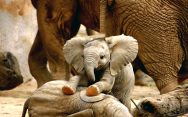
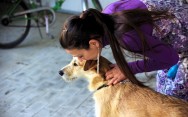

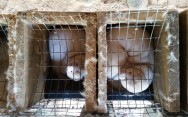
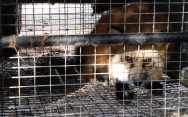
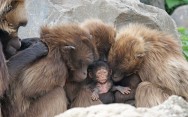
Social Media